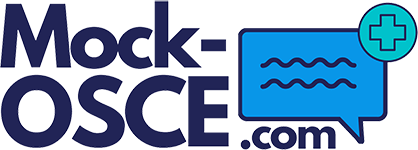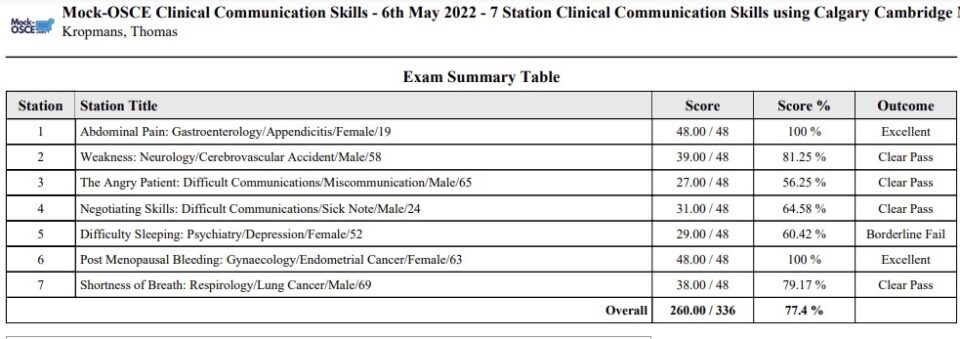Written by Dr Thomas Kropmans, CEO Qpercom empowering Mock-OSCE.com
Programmatic assessment is an integral approach to the design of an assessment program with the intent to optimise its learning, decision-making, and curriculum quality-assurance function. Individual methods of assessment, purposefully chosen for their alignment with the curriculum outcomes and their information value for the learner, the teacher and the organisation, are seen as individual data point1. Mock-OSCE.com provides an individual method of assessment and provides a formative assessment for your learning2. Whereas summative assessment is an assessment of learning used to evaluate student learning, skill acquisition, and academic achievement at the conclusion of a defined instructional period—typically at the end of a project, unit, course, semester, program, or school year3.
Mock-OSCE.com offers live training sessions for medical and healthcare students seeking to improve consult skills. Students are cycled through 7 separate ~10-minute one on one sessions with a “mock” patient. Each session begins with a reading phase that gives 1 minute to review a “mock” chart, then a video chat opens, and the student conducts a consultation. In the first half, the student is allowed to ask questions of the patient to understand the medical situation. Then the student is asked to diagnose the patient, and finally to provide a treatment plan. In the final minute, the patient will then provide feedback to the student to improve their methodology. This process continues for 6 more separate “mock” patients. After the entire session is over, an email report card is sent that provides detailed feedback of the student’s efforts.
We at Mock-OSCE.com qualify our unique online approach as a “formative assessment method” to provide insight in your own learning. The patient scenarios are real, live and fully played out scenarios, however, all years of study should be able to get their best learning out of it. Codebook for rating clinical communication skills based on the Calgary-Cambridge Guide of Else Dalsgaard Iversen (2020)4 is used as a short form to assess your clinical communication skills. The feedback form sent to you shortly after the assessment, provides insight in the quality of how you; 1. Initiated the session, 2. Gathered information, 3. Built a relationship, 4. Provided structure, 5. Explained and planned treatment, and finally, 6. How you closed your session. Some of these items are subdivided (12) and marked on a scale from 1 – 4. The latter is repeated for all scenarios offered in that particular OSCE. Your maximum score is 48 per station, 336 in total for 7 stations.
Assuming you would participate in all 7 stations, we at Mock-OSCE.com have indicated the “pass bar” for final year and postgraduate students at 85% (> 285.6), for 4th and 5th year level respectively 70% (>235.2), 3rd year 50% (= 168) and finally 1st and 2nd year should be able to reach the threshold of 40% (<134.4). However, formative assessment is only providing you with an indication of where you’re at plus detailed feedback (Feedback Approach). Over the years to come, our data analysis will indicate whether these indicatives are correct and what level of “error” needs to be incorporated if a worldwide cohort of students is taking part in Mock-OSCE.com. Most importantly, what the quality is of the oral and written feedback being provided by the patient/actors.


